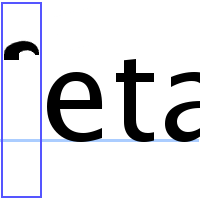Tahitian language
Tahitian language (Reo Tahiti) is an Austronesian language spoken primarily in Tahiti, one of the islands of the Society Islands in French Polynesia. It is the main language of communication among the islands' inhabitants, alongside French, which is the official language of administration. Tahitian is part of the larger Eastern Polynesian language group, which also includes Hawaiian, Maori (spoken in New Zealand), and other languages spoken throughout the Pacific Ocean.
History[edit | edit source]
The Tahitian language has its roots in the ancient languages spoken by the Polynesians who navigated the Pacific Ocean and settled the islands thousands of years ago. With the arrival of European explorers in the 18th century, Tahitian began to undergo changes due to the influence of languages such as English and French. In the 19th century, Christian missionaries played a significant role in developing a written form of Tahitian, which further facilitated its spread and standardization.
Phonology[edit | edit source]
Tahitian has a relatively small phonemic inventory, with five vowel sounds and about ten consonant sounds, which is typical for Polynesian languages. The language is known for its lack of sibilants and its use of the glottal stop as a phonemic consonant. Vowel length is phonemic, meaning that word meaning can change based on the length of the vowel.
Grammar[edit | edit source]
Tahitian grammar is characterized by its use of Polynesian typological features, including the use of Subject-Verb-Object (SVO) word order in sentences. It employs reduplication and the use of particles to indicate tense, mood, and aspect. Pronouns in Tahitian distinguish between inclusive and exclusive forms, and there is a complex system of possessives.
Vocabulary[edit | edit source]
The Tahitian vocabulary is rich in terms related to the island's natural environment, culture, and social organization. There has been significant borrowing from French, and more recently, English, especially in terms of technology and modern life. Efforts are being made to preserve the traditional vocabulary and concepts that are unique to Tahitian culture and worldview.
Writing System[edit | edit source]
The Tahitian language uses the Latin alphabet, introduced by European missionaries. The orthography was standardized in the 19th century, focusing on simplicity and reflecting the language's phonology accurately. The Tahitian alphabet consists of 13 letters, and it does not use the letters b, c, d, g, q, x, y, and z, which are common in many European languages.
Status and Revitalization[edit | edit source]
Today, the Tahitian language faces challenges from the dominance of French in official and educational contexts. However, there is a growing movement for language revitalization, with initiatives aimed at promoting Tahitian through education, media, and cultural activities. The government of French Polynesia has implemented policies to encourage the teaching and use of Tahitian in both formal and informal settings.
Cultural Significance[edit | edit source]
Tahitian is not just a means of communication; it is a vital part of the Polynesian cultural identity. Language, chants, songs, and oral traditions play a central role in preserving the history and heritage of the Tahitian people. Efforts to revitalize the language are closely tied to broader movements to preserve and celebrate Polynesian culture.
Search WikiMD
Ad.Tired of being Overweight? Try W8MD's physician weight loss program.
Semaglutide (Ozempic / Wegovy and Tirzepatide (Mounjaro / Zepbound) available.
Advertise on WikiMD
|
WikiMD's Wellness Encyclopedia |
| Let Food Be Thy Medicine Medicine Thy Food - Hippocrates |
Translate this page: - East Asian
中文,
日本,
한국어,
South Asian
हिन्दी,
தமிழ்,
తెలుగు,
Urdu,
ಕನ್ನಡ,
Southeast Asian
Indonesian,
Vietnamese,
Thai,
မြန်မာဘာသာ,
বাংলা
European
español,
Deutsch,
français,
Greek,
português do Brasil,
polski,
română,
русский,
Nederlands,
norsk,
svenska,
suomi,
Italian
Middle Eastern & African
عربى,
Turkish,
Persian,
Hebrew,
Afrikaans,
isiZulu,
Kiswahili,
Other
Bulgarian,
Hungarian,
Czech,
Swedish,
മലയാളം,
मराठी,
ਪੰਜਾਬੀ,
ગુજરાતી,
Portuguese,
Ukrainian
Medical Disclaimer: WikiMD is not a substitute for professional medical advice. The information on WikiMD is provided as an information resource only, may be incorrect, outdated or misleading, and is not to be used or relied on for any diagnostic or treatment purposes. Please consult your health care provider before making any healthcare decisions or for guidance about a specific medical condition. WikiMD expressly disclaims responsibility, and shall have no liability, for any damages, loss, injury, or liability whatsoever suffered as a result of your reliance on the information contained in this site. By visiting this site you agree to the foregoing terms and conditions, which may from time to time be changed or supplemented by WikiMD. If you do not agree to the foregoing terms and conditions, you should not enter or use this site. See full disclaimer.
Credits:Most images are courtesy of Wikimedia commons, and templates, categories Wikipedia, licensed under CC BY SA or similar.
Contributors: Prab R. Tumpati, MD

